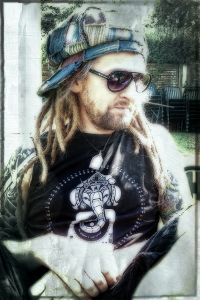|
|
8. Back to Europe
Jaipur -
Quetta -
Teheran -
Istanbul -
Athens -
Brindisi
| |
|
Jaipur
After having lived on the “Roof of the World” for seven months I was now back in the Indian lowlands. In Gorakhpur I walked from the central bus station to the railway station, passing the Tourist-Information. I threw some dirty looks at the deceiver but he just laughed at me. It was not possible to book a seat in such a short time and I was expecting the worst. The train to Delhi was three hours late – a common thing I found out later. It was packed with people and I saw a Brahman lying down on a bench thus occupying three seats. I was quite disgusted with this kind of behaviour and told him to get up and make room; I am not a Hindu and I do not pay attention to this degrading system of “classification”. To the astonishment of my fellow travellers he actually got up and made room for me and a mother with her baby. There was some low-key laughter all round and my action was greeted with high approval and respect.
In the Tourist-Camp I met Giuliano and Anna from Rome who were travelling back to Italy the following morning. They gave me their address just in case my uncertain journey would bring me there. Afterwards I wandered through Paharganj.
|
|

|
| |
Paharganj
Photo by Robert Fraisl
Its large bazaar was a treasure trove for jewellery, artisan craft-work and books. In one of the shops I discovered a German edition of Hitler's “Mein Kampf” . When I picked it up to take a look the owner of the shop lifted his right arm in the notorious gesture an greeted me with
“Heil Hitler!”
Shocked, I dropped the book – this was something I surely did not expect. The shop owner handed me an edition of the same book from 1944 in Tamil.
“We too are Arians and proud of this! The origin of your swastika surely has its origins in India.”
At a loss for words and dazed I left the shop. Tamil is widely spread in the South of India and in Sri Lanka. In India as well as other Asian countries, the swastika is a symbol of good luck and has healing properties. The swastika used by the Nazis was a symbol for the sun and had been used by Vikings, Teutonic peoples and other tribes of Middle- and Northern Europe. At the time such symbols were foreign to me; my generation almost exclusively knew about Nazis from history books.
Next morning I took the bus to Jaipur to buy a few precious stones and silver ware. I knew the city from my travels to and from Pushkar, due to the freight I was carrying at that time however, I had been in somewhat of a hurry.
The most famous building of this city is the Hawa Mahal, Palace of the Winds, with its extraordinary architecture. The honey-comb facade's sole purpose was to make a view of the street possible for the ladies in the harem. They could watch and observe the public without being seen themselves or watch the pompous parades. The latticed windows ensured a permanent circulation of air and thus gave this “Maison de Plaisance” its name. The meaning of Hawa is Wind, and Mahal is the Palace.
|
|
Robert Fraisl

|
| |
Hawa Mahal
Photo by Swami Jack
The bus reached Jaipur in the middle of the night – around 3 a.m. Tired I walked through the sleeping “Pink City” - which got its name from the pink coloured buildings – heading towards one of the few burning lights. It was a sweet shop and gathering place of revellers. There was a great assortment of sweets from all over the subcontinent on display. I feasted on Gulap Jamun. Small fried balls made of milk, flour, cardamom, and soaked in warm sugar water, spiced with rosewater. I inquired about a hotel and was directed next door and I realized that the shop was part of a big, higher class hotel. Knowing well that this was not going to be a cheap I still entered. On the one hand I just wanted to sleep, on the other hand I did not want to show that actually I could not afford to stay at the LBM Hotel. It cost me several hundred rupees. During a Bollywood film running on the big screen of my TV I fell asleep in the most comfortable and expensive bed of my whole journey in India.
The LMB was located in the Johari Basar, the center of jewellery and precious stones. On the streets vendors were offering cheap stones of lesser quality whose genuineness could be doubted. I went from shop to shop and made friends with the owners. After having settled in at the Evergreen Guest House, Ram showed me the grinding shops at the city's outskirts. The raw stones were usually cut by children who activated the grinding stones with their feet; for the major part they worked on the smaller stones. In one of the workshops the owner was completing a 20 cm high skull made of mountain crystal. I would have loved to take it with me, but the price and the weight made it impossible. I am sure it weighed around 10 kilo.
In the following days I spent many hours in his shop. He had taught himself to read and write and all the know-how about precious stones he had gradually acquired. Many stones have their colour changed through heat and radiation. He showed me methods to test the authenticity of the stones. With a heavy scratch on a rough piece of porcelain the true colour of the stone would appear. The majority of the stones will leave a white, grey or colourless scratch mark. There are only few exceptions where the known colour is shown i.e. blue lapis lazuli and green malachite. For raw stones this is a good way of testing which should not be applied for cut and polished stones however. Should the thus tested gemstone be genuine the value decreases considerably due to this kind of “treatment”. The pale lapis lazuli from Chile for instance contains a lot of calcite and can be darkened through heat. The darker and considerably more valuable Afghan lapis lazuli however, contains pyrite which would be destroyed by heating the stone. Ram would wrap tourmaline splinters in tinfoil and heat them with a lighter. The green stones would get the highly sought-after emerald colouring whereas the reddish brown stones would turn to rubies.
His range of goods wasn't very big and most of his money he made with commissioned sales. Polishers would offer him paper-wrapped stones and my friend would find buyers for them. Mostly these stones were top-class ceylonese rubies and sapphires from Ratnapura. Sometimes the raw material also originated from the famous deposits in Thailand and Burma. In former days the most beautiful sapphires were found on an altitude of 5000 meters in Kashmir. After the completion of a successful deal he invited me to a meeting with friends. We heavily drank indian whiskey and beer and a very drunk crown-prosecutor gave me a lift to the hotel on his motor scooter. At the end of this very adventurous drive he made a promise: “I will help you should you ever have any problems. But only once!”
Next day I took a trip to Amer. The Maota Lake, heavily overgrown with water hyacinth, lies at the foot of the palace. For years these plants were considered to be useless weeds, using up the water's oxygen content, until they were found to be rich in protein making them a valuable feeding plant for fisheries and animal farming – and on top of this, it was found that these plants have the ability to clear the water from certain toxic materials, thus purifying it.
|
|
Swami Jack

|
| |
Water hyacinths
Photo by Lichtfaktor
|
|
Lichtfaktor

|
| |
Maota lake with Amer fortress
Many tourists had themselves carried to the fortress on the back of elephants and were happy to get off the swaying “means of tranport”.
|
|

|
| |
Working Elephants
Also for the elephants this was not fun. They waited for hours to carry these foreigners to the former palace of the
Rajpoots. The customary elegant gait of the gray giants got slightly lost in this process.
|
|

|
| |
The way up to the Amer fort
Standing here on top gave one an idea of the size of the former town, which
was surrounded by an imposing wall.
|
|
![]()
|
| |
Town wall
This fortified palace is a wonderful example of the high quality architecture of the maharajas, many of whom sadly enough acquired their wealth and power through marauding and brutal wars. When they were stripped of their privileges many of the palaces were turned into state museums or hotels in order to preserve them for the future. In rural areas the big kings were considered to be authorities and presided over court cases. Often liquid opium was distributed to cool the heated emotions.
|
|

|
| |
Amer Palace
Back in town I was caught up in a festive parade with richly adorned elephants.
|
|
![]()
|
| |
Adorned elephants
Photos by Swami Jack
A brass band, all dressed up in uniform, accompanied this parade with deafening music. The melodies sounded very military, but the most probably were the latest hits from popular movies. Women in colourful garments danced to the music and nobody cared that this procession held up traffic. An enormous traffic jam was thus created and my bus also got stuck in it. So I walked the few kilometers to Ram's shop.
I bought star sapphires and star rubies from Ram. Rutile needles contained within these stones created an “asterism” with a six-ended star, which moves on the stone's surface when the stone itself is being turned and twisted. Imitations can easily be spotted – the “star” does not move along but remains static. Apart from that I acquired some chains of blue-shimmering ceylonese moonstones and afghan lapis lazuli. From silversmiths I bought the necessary elements to make necklaces, i.e. chains, chain elements and small amulets.
End of August I got on my way to Pakistan. I travelled by train via Dehli to Amritsar and from there by bus to Wagah.
further
|
|

|
| |
|